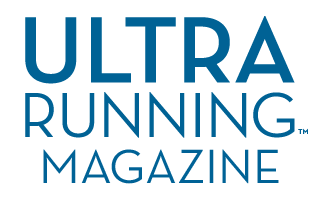When I was asked to start writing this column in 2015, I had just started as an assistant professor at The College of Idaho after moving from the Bay Area. I had just injured myself and was struggling to regain the pea...
Articles by Matt Laye
The goal of this column when I started five years ago was to take existing research in the world of ultrarunning and endurance sports and make it translatable. It’s a lot of fun and I always learn something new. Howev...
When I teach my students about carbohydrate use for energy production during exercise, the discussion always starts with where, how much and what form carbohydrate is stored in the body. Carbohydrate is stored in three l...
My goal for this column is always to discuss the latest relevant science on endurance sport, providing both practical takeaways and a peek inside the science of endurance. However, this time I’m going to pivot a little....
Back when I started running, I learned that miles were king. They were essentially the end-all be-all for tracking training even when we were guessing sans GPS watches. Measuring vertical gain? Forget about it....
As the days get longer, spending more hours in the sun is part of training. And when it comes to vitamin D levels, that’s a good thing. Known for its important role in bone health, vitamin D also plays an importan...
Foam rolling takes me back to the track. At UC Davis post-practice sessions, I was typically rolling around wincing in pain because of a chronically tight IT band, and it was causing knee pain. I started foam rolling...
One of the problems with science is that studies are not always easy to reproduce. This is especially true in the field of exercise science where funding is limited, techniques may vary from lab to lab and the subject...
What if decision fatigue leads to physical fatigue? The concept that mental fatigue is related to physical fatigue is an active area of research. There are a few theories which are being tested. The first is the centr...
One of the favorite debates of exercise physiologists is fatigue and the limits of performance. Is fatigue just in the brain? Or is it in the muscle? Are we limited by the cardiovascular system? Or by the ability to use...
Carbohydrate has four calories per gram which equates to 240 - 360 calories per hour. Current nutritional guidelines for carbohydrate intake during ultra activity is 60-90 grams per hour (g/hr), which lasts 2.5 hours or...
Big days on the trails can require a lot of gear, nutrition, hydration and extra layers. While necessary, all that weight does not always feel great when you are 10, 20, 80 miles into a long race or run. In addition to t...
The stress and anxiety associated with the COVID-19 pandemic reaches every part of our lives, including our exercise habits. Initially, I was going to write about how being a fit runner is beneficial for the immune syste...
Sports nutrition during the Tour de France in the early days consisted of rabbit, hot chocolate and lots of strong red wine. Today, we have a greater understanding of what nutrition is necessary for optimal performance a...
The basis of any effective training protocol is stress and rest. Runners must engage in activity which is more strenuous than usual which causes fatigue. When the stress of training is coupled with adequate rest, a posit...
How can you get a 4% improvement in your running? Some say you just need to buy a new pair of shoes, but the science tells us plyometrics may be the answer.One of the things I like most about running is its efficiency. T...
As ultrarunners, most of the time we are worried about hot weather rather than extremely cold weather – and for good reason. Thermoregulation of body temperature in warmer weather is problematic. While running, about 75-...
In 2009, Elizabeth Blackbourn, a scientist at UCSF, was awarded a Nobel Prize for her work discovering telomeres and their importance in aging. Telomeres are repeated sequences of DNA that protect the end of chromosomes...
Physiologically, there are a lot of differences between men and women. For instance, there are differences in body composition and the ways they fatigue, and there are many potential explanations for performance differen...
Ice baths are a good thing, right? Don’t antioxidant vitamin supplements improve your health? If you have been reading this column over the last several years, you know science is more nuanced than that. For instance, ic...

